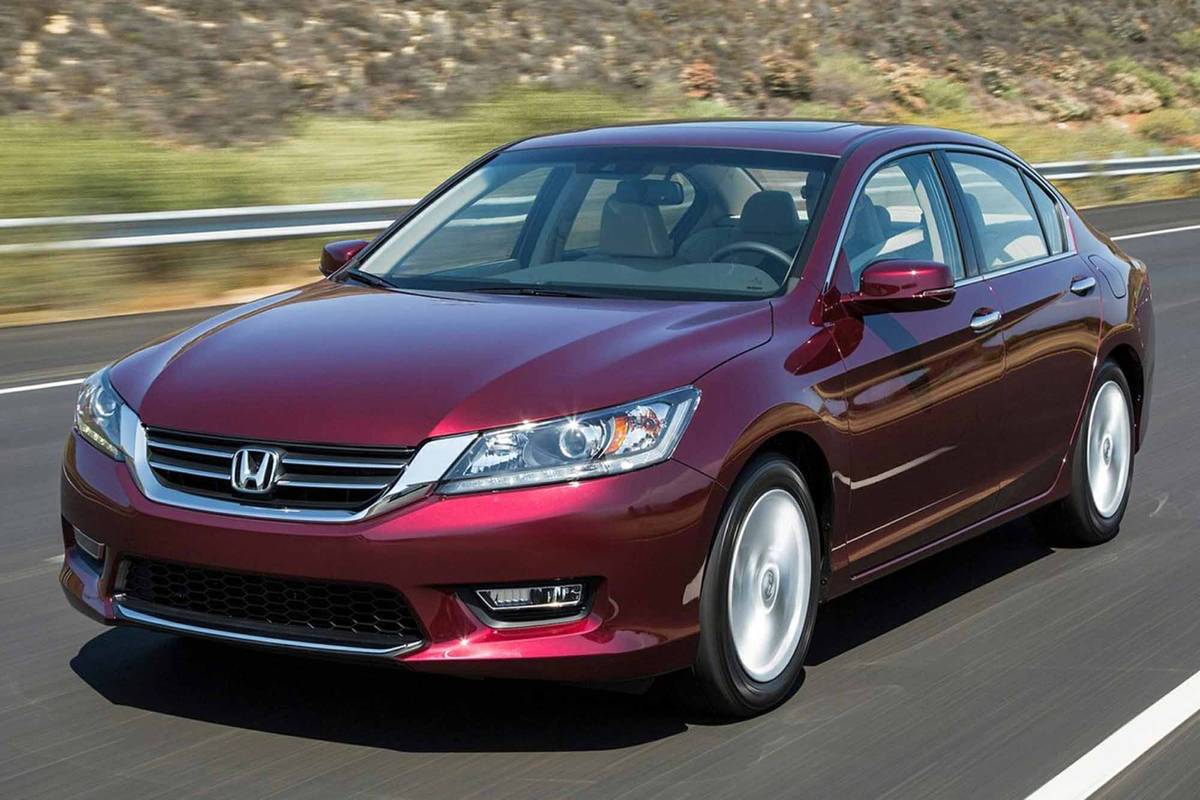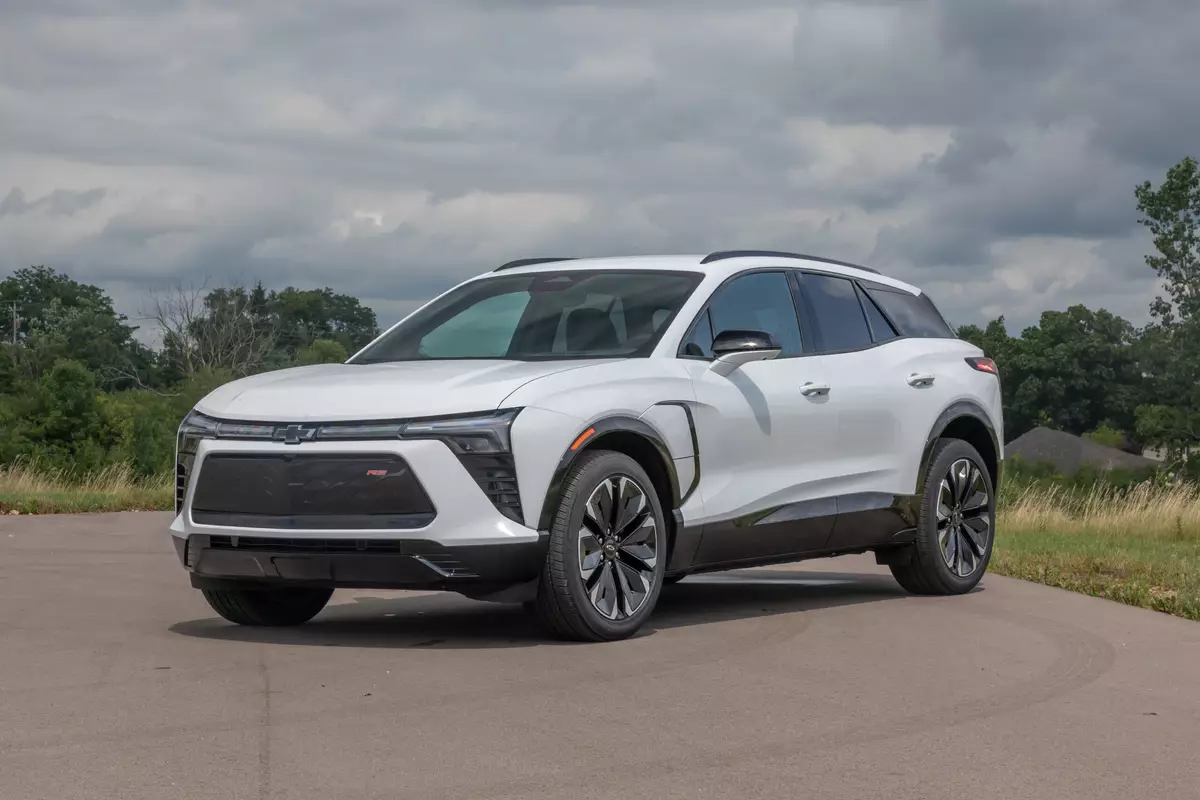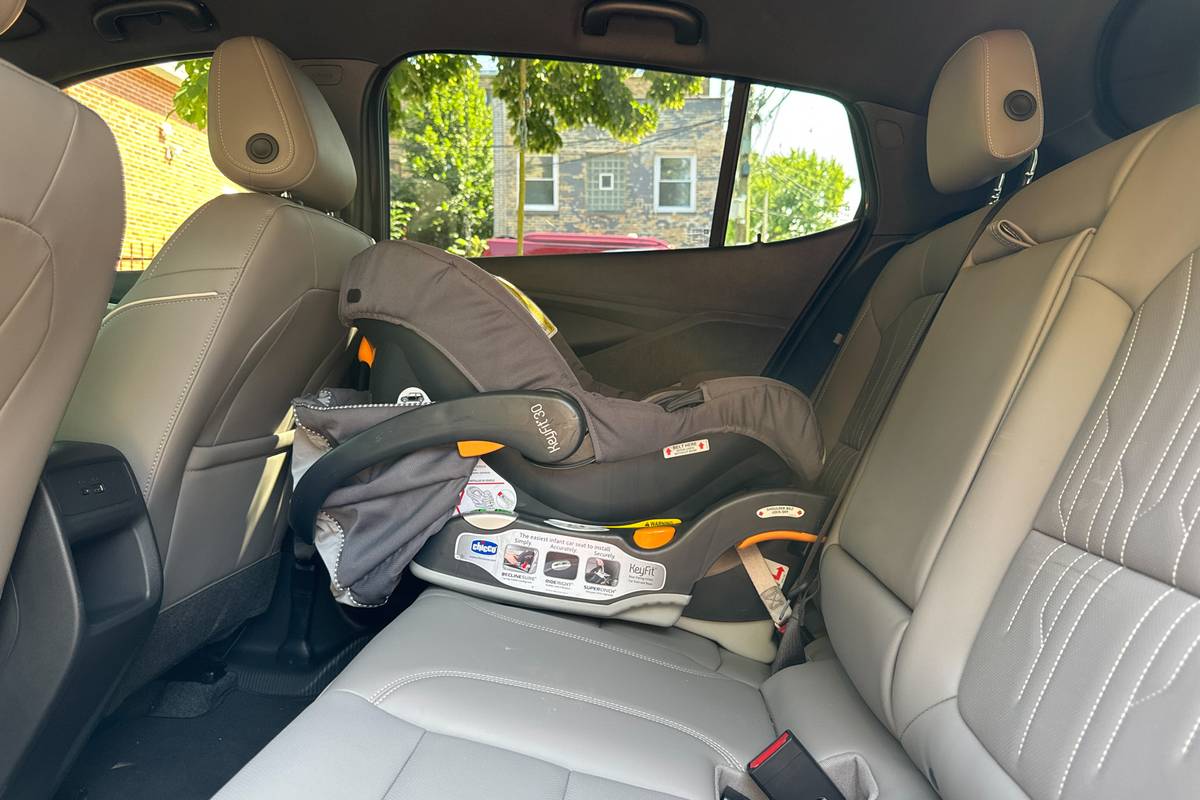Our view: 2003 Chevrolet SSR

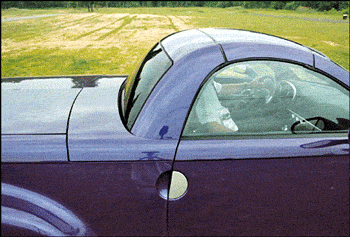

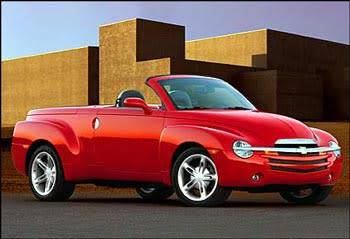
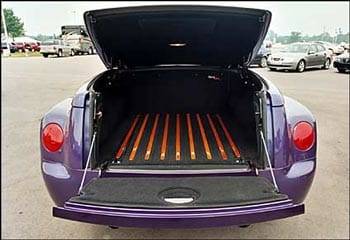



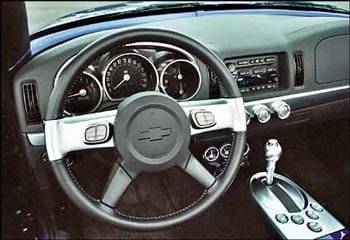
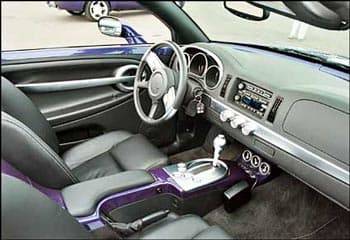
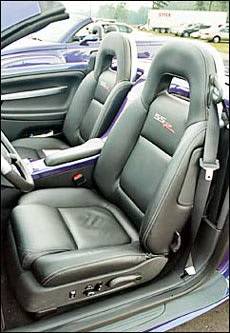

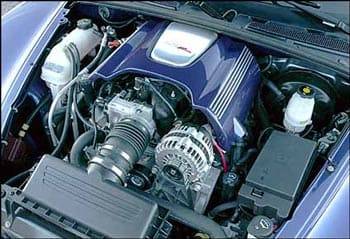
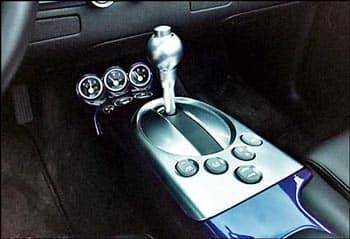


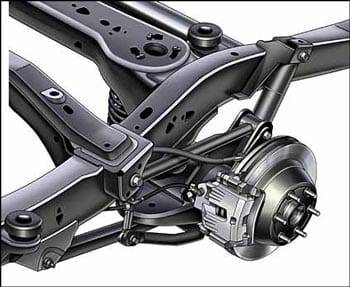
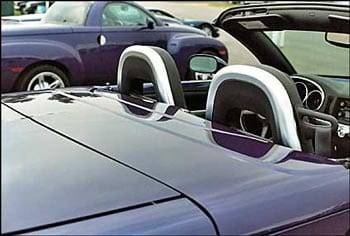

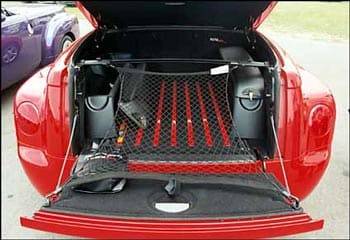

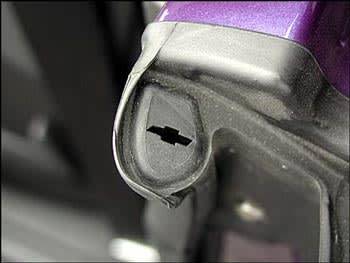





















DaimlerChrysler’s Chrysler Group has a history of turning way-out concept vehicles into production versions that come darn close to the original, or at least capture the spirit. I speak of the Chrysler PT Cruiser, Dodge Viper and Plymouth Prowler. General Motors is not known for this, unless you count the Pontiac Aztek, which many people wish had changed a lot before the concept found its way onto the assembly line. Bygones. With the Chevrolet SSR, a late 2003 model, GM proves it is just as willing to trade convention for style.
Convention isn’t the only trade-off, as I learned during a brief drive in conjunction with GM’s model-year preview in Milan, Mich. Before I get to the vehicle’s pros and cons, let’s address the issue of what it is: SSR stands for super sport roadster. Roadster means two-seat convertible, which is exactly what the SSR is. It has a retractable hardtop, the two sections of which store vertically behind the cabin. It’s fully powered, takes about 25 seconds and is quite the attraction when in motion. It works well and looks great, up or down, thanks to a hard tonneau cover.
Behind the cab, between exaggeratedly flared fenders, is a pickup-truck-style cargo bed that measures more than 4 feet long. People are sure to puzzle over how to classify the SSR, but it comes across very much as a convertible regular-cab pickup truck with a matching hard bed cover. Though the concept introduced at the 2000 North American International Auto Show was built on the company’s earlier Blazer/S-10 platform, the production vehicle borrows the TrailBlazer’s ladder-style boxed frame, and is thus larger. Regardless, the SSR more than captures the concept’s look and feel. Its side mirrors are mounted in the traditional location rather than high on the A-pillar, and the windshield lacks the concept vehicle’s center ridge line. The line remains in the hood, though, and accents the grille and front fascia as well. The SSR survived the transformation from concept to production better than the PT Cruiser did, in that it retains the highly stylized front fascia, unsullied by a bumper. Because it’s a truck, regulations don’t require the SSR to have one, which is great for the appearance, but I wouldn’t want to be the one to pay for repairs after even a minor front-end collision.
The SSR doesn’t shout “retro” to me, but its curvaceous lines are based on the Chevy Advanced Design pickup era ranging from 1947 – 1953. The interior has some retro cues as well, such as the instrument panel design, but many modern conveniences are onboard, too, including audio controls on the steering wheel and a power driver’s seat. The passenger seat only moves fore and aft, but it, too, is powered and includes a lumbar adjustment. Another modern aspect is the copious use of aluminum-look trim. As usual, it looks better from a distance, but this style and its questionable effectiveness are practically inescapable, marketwide, in vehicles introduced or redesigned within the past few years.
The SSR’s roofline is considerably higher than that of the concept vehicle, which takes little away from its look while granting decent headroom when the top is up. I hit the road with the top up to get a feel for the SSR as a potential “daily driver,” a car one could own as one’s sole vehicle. The sightlines are quite good. As in conventional roadsters, the rear window is close to the driver’s head, so the rear view is basically unobstructed. Their size notwithstanding, I generally find pickup trucks easy to parallel park because the rear corner of the cargo box helps one visualize the rear bumper. In the SSR, it’s not quite as simple because the fenders are several inches wider than the box and out of sight.
The SSR’s standard and only drivetrain comprises the 5.3-liter Vortec 5300 V-8 engine mated to a four-speed-automatic transmission.
| Engine | |||||||||||
|---|---|---|---|---|---|---|---|---|---|---|---|
| Type | 5.3-liter V-8 | ||||||||||
| Valvetrain | overhead valve | ||||||||||
| Horsepower | 300 @ 5,200 rpm | ||||||||||
| Torque (lbs.-ft.) | 331 @ 4,000 rpm | ||||||||||
| Redline | 6,000 rpm | ||||||||||
| EPA-Estimated mpg (city / highway) |
15 / 19 | ||||||||||
| Required Gasoline | regular unleaded (87 octane) | ||||||||||
| Manufacturer data | |||||||||||
The same engine that’s optional on the seven-seat TrailBlazer EXT, with slightly higher output, the Vortec 5300 is plenty potent, but the SSR isn’t as quick as hinted by the concept vehicle a smaller truck with a larger, 6.0-liter engine. Chevy says the SSR can accelerate from zero to 60 mph in 7.6 seconds and covers the quarter-mile in 15.9 seconds at 90 mph. As usual, the weight explains it. At 4,760 pounds, the SSR’s base curb weight is higher than that of a four-wheel-drive TrailBlazer and about 100 pounds shy of the lightest TrailBlazer EXT.
The SSR is by no means poky, mind you. The pushrod V-8 has generous torque at low rpm, so it’s good for quick starts around town, and there’s no great disadvantage to having four rather than five gears. The Hydra-Matic 4L60-E automatic transmission characteristically kicks down quickly without bogging down, though the adequate low-rev torque means kickdown happens only when you give it a lot of pedal. The transmission doesn’t include a clutchless-manual mode, and, as usual, I didn’t miss it.
The engine drives the rear wheels, which are large 20 inches in diameter with Goodyear Eagle RS-A (Rally Sport-Asymmetric) all-season performance tires rated P255/45R19. The front wheels measure 19 inches and wear P295/40R20 tires (tire codes). Four-wheel drive isn’t offered, so a Torsen limited-slip differential and traction control are standard equipment, as are four-wheel disc brakes with ABS and electronic brake-force distribution. With the traction control and all-season tires, the SSR is probably workable in the snow, but it wouldn’t be my first choice. If necessary, one could load some extra weight over the rear axle, though it bears noting that the SSR is better balanced than a conventional pickup, with a 52/48-percent front/rear weight distribution due in part to the all-aluminum engine, which is 100 pounds lighter than the earlier, cast-iron version.
This balance contributes to decent cornering with an understeer bias. If you look at the spec sheet, Chevy seems to be doing everything right in the chassis department. The SSR has rack-and-pinion steering and a double-wishbone front and multilink rear suspension with coil springs all around. The rear shock absorbers are mounted outboard of the frame rails for a softer ride without compromising body roll damping. All that said, the SSR struck me as rather trucklike in its ride and handling. Five years ago, this might not have warranted comment, but many of today’s trucks be they unibody or body-on-frame don’t ride or handle like trucks. So I can’t pin the blame on the SSR’s body-on-frame construction or non-independent rear axle.
Structural rigidity may be the issue. Roofs play an important part in stiffening a vehicle, be it car or truck: When you remove the roof, or make it a less-rigid structure, the vehicle is less resistant to flex and twist. Chevrolet reinforced the SSR’s frame with seven cross-members, and the company cites bending and torsional rigidity ratings that are “highly competitive with those of unibody construction convertibles.” All the same, I experienced a fair amount of flex and shudder. It’s possible that the vehicle I drove, a member of the Signature Series, wasn’t as buttoned down as later models will be a caveat automakers commonly issue about pre- and early-production vehicles provided to the media.
Another shortcoming that might or might not be isolated to my test vehicle is the preponderance of wind noise when the top is up. Designed in cooperation with convertible specialists ASC Inc. (originally American Sunroof Co.) and Karmann USA, the retractable hardtop posed challenges, not the least of which was getting it to seal adequately. Though engineers claim to have licked the problem, my test vehicle made enough wind noise that I kept reaching for the window switches thinking one hadn’t closed fully. Wind noise isn’t a pet peeve of mine. It really was impossible to ignore. One of the typical advantages of a retractable hardtop over a ragtop is quietness, so the noise was unexpected. If you’ve experienced this or not in an SSR, let me know.
As with most convertibles, when the top is lowered the SSR is transformed, and issues of performance and accommodation fade. It is this transcendent quality, unique to convertibles, that allows me to forget the fact that my own 1979 Fiat is an unaccountable heap. At speed, the SSR occupant gets a healthy blast of air to the back of the head, which isn’t exactly rare in convertibles. Though my test vehicle didn’t include one, a metal-framed wind-break is offered for attachment behind the seats. It’s not a factory option but a Chevrolet Accessory one of almost 50 promised for dealer sale over the next four years.
Top up or down, the SSR turns its share of heads. This, ultimately, is what the SSR stands to do best. As Chevrolet states, the SSR is not meant to challenge Ford’s SVT F-150 Lightning, the quickest pickup truck on the market. Neither is it intended to be a fully functioning pickup, though it does offer decent utility. Reporting the cargo box’s dimensions is complicated by the fact that it doesn’t have square corners and its narrowest point is the tailgate, which Chevrolet says is 39.8 inches. The widest part is 56.6 inches at the floor. The maximum length, from the tailgate to the top of the front wall, is specified as 48.7 inches, and the box walls are 17.8 inches high. Where the standard for measuring car trunk volumes allows for odd shapes, the truck standard is less flexible, so Chevrolet says its accounting of the SSR’s cargo box volume is very conservative at 23.7 cubic feet.
For comparison, the more squared-off cargo bed on the Ford Explorer Sport Trac, a five-seat sport utility vehicle/pickup, measures 50 inches long, 41.2 inches wide between the wheel wells and 19.7 inches deep, according to Ford. The volume, taking into account the wheel wells, is given as 29.6 cubic feet.
The SSR has a conventional tailgate, and the bed cover is spring-loaded and reasonably simple to raise. (A powered cover is another of the promised Chevrolet Accessories, though it’s not currently available.) It doesn’t go high enough to accommodate a large piece of furniture or the like, a criticism levied against Lincoln’s ill-fated Blackwood luxury pickup truck. To address this concern, Chevy representatives say, the cover is easy to remove. An optional storage system provides a protective bag, the means to hang the cover on one’s garage wall, and a U-shaped trim piece to hide the gutters and seals on which the cover normally rests.
Equipped with an optional towing package, the SSR can pull a trailer, though the capacity is rather low for a rear-wheel-drive truck: 2,500 pounds maximum trailer weight.
The SSR currently comes in just one version for retail sale, the LS trim level. The Signature Series vehicles mentioned above are part of a special marketing program. The first 25 SSRs, outfitted with special paint and features, were “bought” by Chevrolet and are being auctioned or donated. Each of the 25 vehicles bears a plaque with a serial number and the signatures of a few people involved in its development. The first Signature Series SSR, bearing the autographs of GM’s top brass, will be kept in the company’s historical collection.
Others appear at public events at which Chevy personnel collect memorabilia on the cars. Chevy includes a “pedigree” scrapbook of such items when it auctions each car. The cars have special themes such as the Society of Automotive Engineers (SAE), Chevy Racing and Street Art that coincide with the events at which they appear. There are even seven “Media Reviews” cars, some of which were involved in the 2004 model preview at which I drove the SSR. These cars’ scrapbooks will include photos and press clippings of the event, though I doubt this cars.com First Drive report will make the cut. The shortcomings listed above probably wouldn’t inspire a bidding war.
In May, Bob McDorman, owner of McDorman Chevrolet in Canal Winchester, Ohio, had the winning eBay bid in the auction of the SAE edition SSR, serial number 02. GM is donating the $137,850 to an SAE scholarship.
In addition to the signatures, special badges and Ultra Violet paint, the Signature Series vehicles include a body-colored partial engine cover, wood strips in the cargo floor, SSR floormats, silver stitching on the seats and steering wheel, and a body-colored auxiliary gauge package at the front of the center floor console. The instruments which include voltage, fuel consumption and transmission oil temperature gauges supplement the engine temperature and oil-pressure readouts on the instrument panel. This feature is available as a stand-alone option on the SSR, as are the floormats. Options currently include satin-chrome running boards, cargo nets, bedliners and locking “side-saddle” storage boxes that mount in the cargo area along either side wall. You can view all of the SSR’s standard and optional features and their prices in the Buying Guide.
Though some competing 2004 models have been on sale for a while, the SSRs that began production at GM’s Lansing, Mich., Craft Centre in mid-July and will soon filter into dealerships are 2003 models. This is because the Signature Series began production in December 2002. They would have had to begin production in 2003 to be called 2004 models. Chevy dealers pressed for a limited run to ensure that the first model year is more collectible. The current batch of 2003 SSRs will number roughly 3,500 units before production switches over to 2004 models in November. Chevy plans to build 14,000 to 15,000 units annually starting in 2004.
| Send Joe an email |

Former Executive Editor Joe Wiesenfelder, a Cars.com launch veteran, led the car evaluation effort. He owns a 1984 Mercedes 300D and a 2002 Mazda Miata SE.
Latest news
